
Enchanting Miryang Valley: South Korea’s Hidden Gem
Explore the serene beauty and rich cultural heritage of Miryang Valley, South Korea's hidden gem, perfect for nature lovers, hikers, and cultural enthusiasts.
Miryang Valley, nestled in the heart of South Korea, is a paradise for nature lovers and adventure seekers alike. Known for its stunning landscapes, the valley offers a serene escape from bustling city life. The area is renowned for its lush greenery, crystal-clear streams, and dramatic rock formations. Hiking enthusiasts will find numerous trails that lead to breathtaking viewpoints, making it a perfect destination for both novice and experienced hikers. The valley is also home to several cultural and historical sites, including ancient temples and traditional Korean villages. These sites offer a glimpse into Korea’s rich heritage and provide a tranquil setting for meditation and reflection. Visitors can immerse themselves in the local culture by participating in traditional tea ceremonies or exploring the local markets. During the warmer months, Miryang Valley becomes a hotspot for water activities. The clear, cool waters of the Miryang River are ideal for swimming, kayaking, and fishing. For those seeking a more relaxed experience, picnicking by the riverbanks or simply lounging in the shade of the towering trees can be just as enjoyable. Whether you are an adventure enthusiast or someone seeking peace and tranquility, Miryang Valley promises an unforgettable experience.
Local tips in Miryang Valley
- Visit during spring or autumn for the most pleasant weather and stunning natural scenery.
- Wear comfortable hiking shoes and bring plenty of water for the trails.
- Check out the local festivals, such as the Miryang Summer Performing Arts Festival, for a unique cultural experience.
- Consider staying in a traditional Korean guesthouse for an authentic experience.
- Learn a few basic Korean phrases to help communicate with locals, as English is not widely spoken.
Enchanting Miryang Valley: South Korea’s Hidden Gem
Miryang Valley, nestled in the heart of South Korea, is a paradise for nature lovers and adventure seekers alike. Known for its stunning landscapes, the valley offers a serene escape from bustling city life. The area is renowned for its lush greenery, crystal-clear streams, and dramatic rock formations. Hiking enthusiasts will find numerous trails that lead to breathtaking viewpoints, making it a perfect destination for both novice and experienced hikers. The valley is also home to several cultural and historical sites, including ancient temples and traditional Korean villages. These sites offer a glimpse into Korea’s rich heritage and provide a tranquil setting for meditation and reflection. Visitors can immerse themselves in the local culture by participating in traditional tea ceremonies or exploring the local markets. During the warmer months, Miryang Valley becomes a hotspot for water activities. The clear, cool waters of the Miryang River are ideal for swimming, kayaking, and fishing. For those seeking a more relaxed experience, picnicking by the riverbanks or simply lounging in the shade of the towering trees can be just as enjoyable. Whether you are an adventure enthusiast or someone seeking peace and tranquility, Miryang Valley promises an unforgettable experience.
When is the best time to go to Miryang Valley?
Iconic landmarks you can’t miss
Nami Island
Discover the enchanting beauty of Nami Island, a serene nature preserve in South Korea, known for its stunning landscapes and rich cultural experiences.
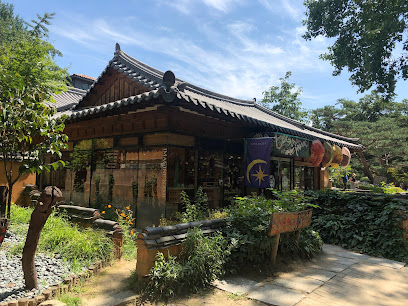
Gamcheon Culture Village
Explore the colorful streets of Gamcheon Culture Village, a cultural gem in Busan, South Korea, filled with art, history, and breathtaking views.
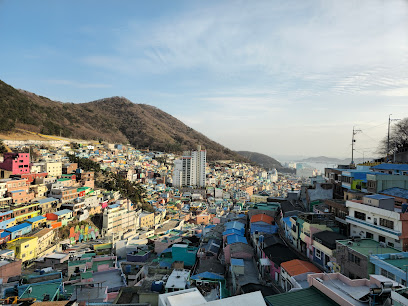
Haedong Yonggungsa Temple
Discover the breathtaking beauty and spiritual serenity of Haedong Yonggungsa Temple, a must-visit coastal Buddhist sanctuary in Busan, South Korea.
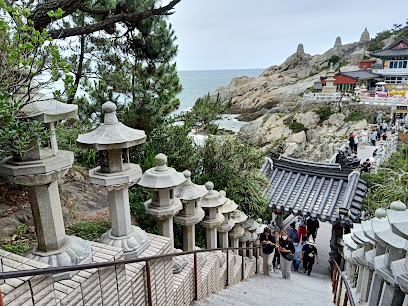
Bukchon Hanok Village
Explore the enchanting Bukchon Hanok Village, a cultural landmark in Seoul where traditional architecture meets vibrant local life.
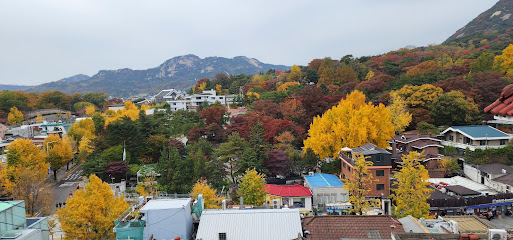
Korean Folk Village
Discover Korea's rich heritage and culture at the Korean Folk Village, a captivating theme park blending history, entertainment, and scenic beauty.
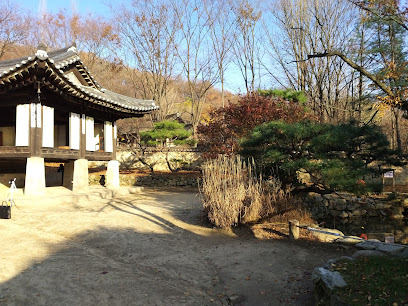
Naksansa Temple
Discover tranquility and spirituality at Naksansa Temple, a stunning Buddhist sanctuary nestled along Korea's East Coast in Gangwon-do.
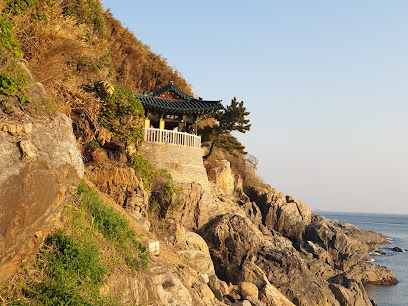
Amethyst Cavern Park
Discover the largest artificial cave in South Korea at Amethyst Cavern Park, where nature's beauty and adventure await every visitor in Ulju-gun.
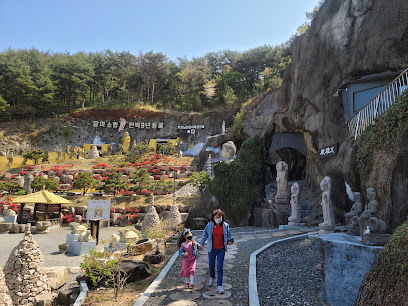
Ganwoljae Flame Grass Road
Explore the magnificent Ganwoljae Flame Grass Road, a stunning hiking destination in Ulsan, South Korea, famous for its enchanting golden grass in autumn.
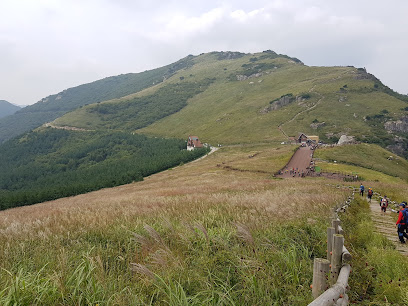
Soswaewon Garden
Discover the serene beauty of Soswaewon Garden, a historic oasis in Jeollanam-do, perfect for nature lovers and cultural enthusiasts alike.
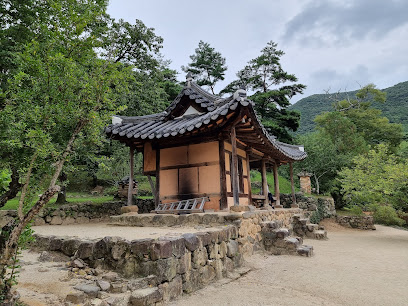
Eden Valley Resort
Discover the magic of winter at Eden Valley Resort, where adventure meets comfort in the heart of Gyeongsangnam-do's stunning landscape.
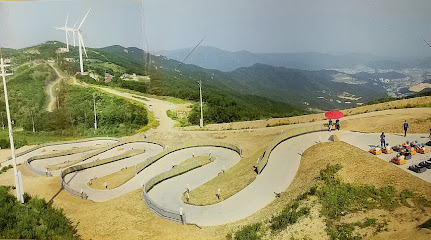
Pyochungsa Temple
Explore the serene beauty and rich cultural heritage of Pyochungsa Temple in Gyeongsangnam-do, a must-visit Buddhist destination for every traveler.
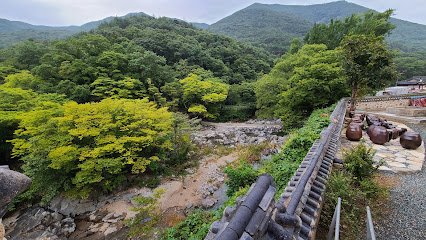
Yeongnamnu
Discover the historical charm and serene beauty of Yeongnamnu, a heritage site that showcases Korea's rich cultural legacy in Miryang.
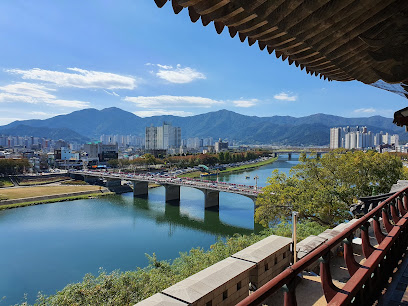
만어사
Explore the serene beauty of Miryang's Buddhist Temple, a perfect blend of spirituality and nature in Gyeongsangnam-do, South Korea.
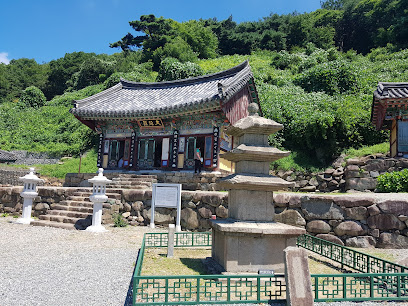
Cheongsong Eoreumgol Valley
Explore the natural beauty of Cheongsong Eoreumgol Valley, a serene destination in Gyeongsangbuk-do perfect for hiking, picnicking, and capturing stunning landscapes.
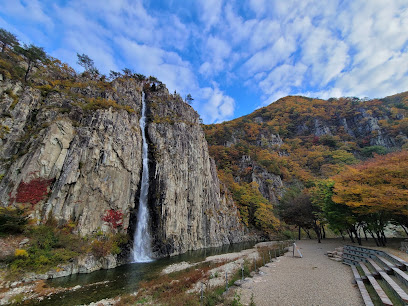
Spavalley
Experience the ultimate water adventure at Spavalley, a premier water park and resort in Dalseong-gun, Daegu, perfect for family fun and relaxation.

Unmissable attractions to see
Gyeongbokgung Palace
Explore Gyeongbokgung Palace, Seoul's iconic cultural landmark, showcasing the beauty of Korea's royal history and stunning architecture.
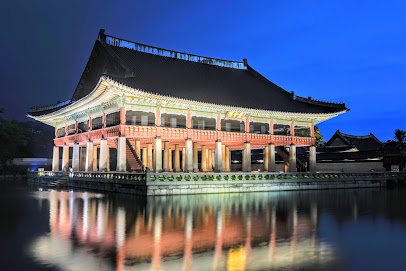
Nami Island
Explore Nami Island's breathtaking landscapes, rich culture, and year-round beauty in South Korea's enchanting nature preserve.

Bukchon Hanok Village
Discover the rich heritage and stunning architecture of Bukchon Hanok Village, a cultural gem in the heart of Seoul, South Korea.
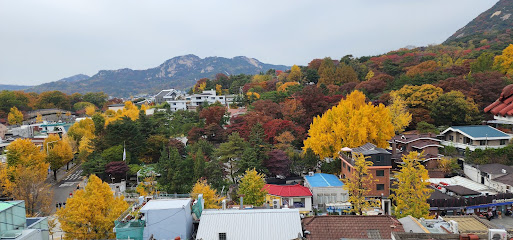
Yongduam Rock
Discover the stunning Yongduam Rock, a natural wonder on Jeju Island, offering breathtaking coastal views and rich local legends.
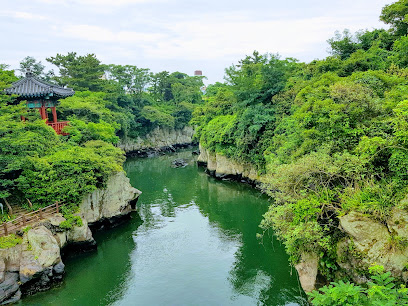
Busan Citizens Park
Explore Busan Citizens Park: A lush urban oasis in Busanjin District, perfect for relaxation, outdoor fun, and cultural experiences.
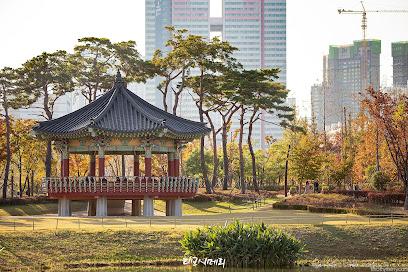
SPA LAND Centum City
Experience ultimate relaxation at SPA LAND Centum City, a premier wellness spa in Busan offering rejuvenating treatments and serene ambiance.
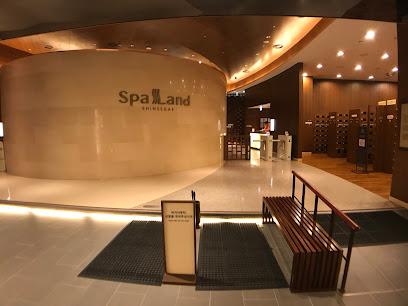
Amethyst Cavern Park
Explore the enchanting Amethyst Cavern Park in Ulju-gun, a stunning theme park filled with natural wonders and captivating geological formations.
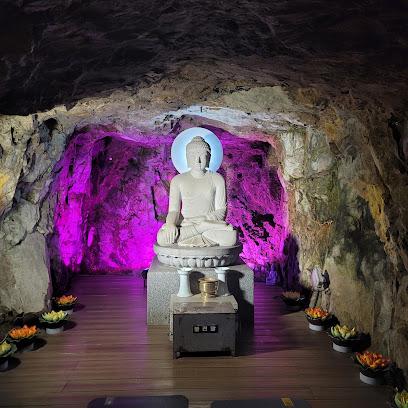
Amethyst Cavern Park
Discover the largest artificial cave in South Korea at Amethyst Cavern Park, where stunning amethyst formations and interactive experiences await.
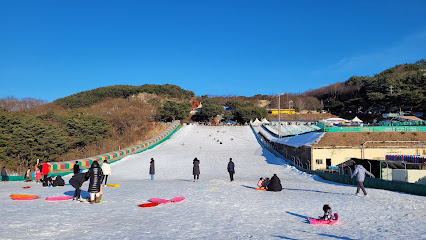
Ganwoljae Flame Grass Road
Discover the breathtaking Ganwoljae Flame Grass Road in Ulsan, South Korea, where nature's vibrant colors and serene landscapes await your exploration.
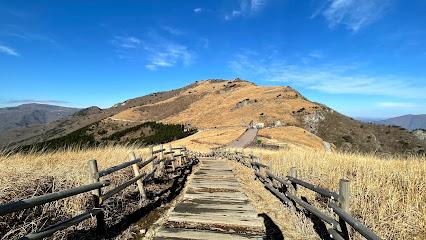
Ganwoljae Flame Grass Road
Explore the stunning Ganwoljae Flame Grass Road in Ulsan, a hiking paradise showcasing nature's beauty with vibrant flame grass and breathtaking views.
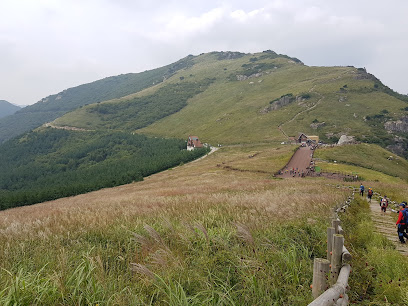
Yeongnam Alps Ice Valley Cable Car Entrance
Discover the stunning views and thrilling rides at Yeongnam Alps Ice Valley Cable Car, a top tourist attraction in Miryang, South Korea.

Eden Valley Resort
Experience thrilling skiing and cozy accommodations at Eden Valley Resort, the perfect winter escape near Busan for adventure seekers and families alike.
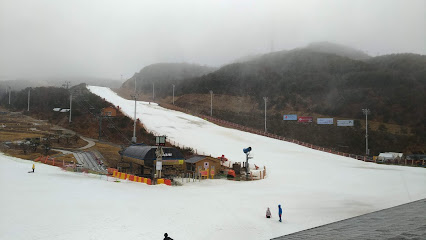
Jusanji Pond
Discover the enchanting beauty of Jusanji Pond in Gyeongsangbuk-do, a serene escape surrounded by nature's splendor, ideal for relaxation and photography.
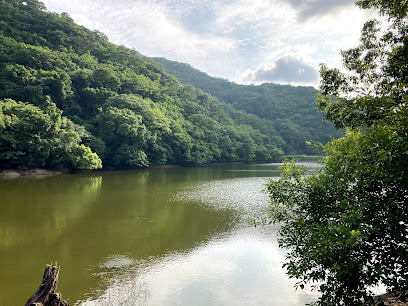
Yeongnamnu
Explore Yeongnamnu, a historical pavilion in Miryang-si, where nature meets Korea's rich cultural heritage in breathtaking landscapes.
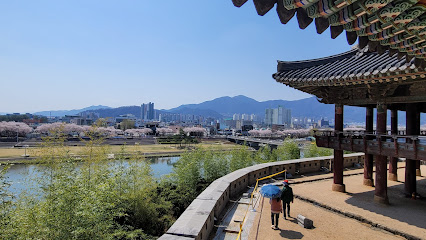
Geoje Maengjongjuk Theme Park
Experience outdoor fun and natural beauty at Geoje Maengjongjuk Theme Park, a perfect family destination in South Korea.
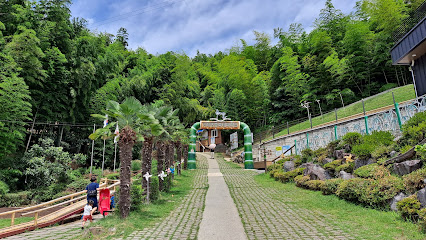
Essential places to dine
Seoul Shilla Hotel The Parkview
Indulge in an exquisite buffet experience at Seoul Shilla Hotel's The Parkview, featuring global flavors and exceptional service.
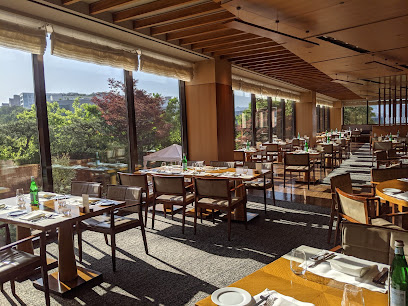
Yeongnamnu
Explore Yeongnamnu: A Heritage Site in Miryang-si Celebrating Korea's Architectural Elegance and Cultural Richness.
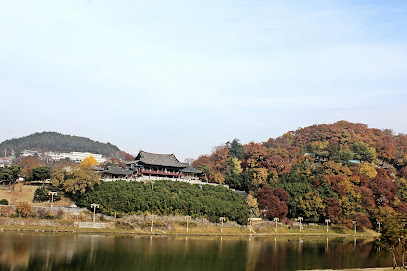
Maple Tree House
Experience the authentic taste of Korea at Maple Tree House, where delicious BBQ meets warm hospitality in Yongsan District.
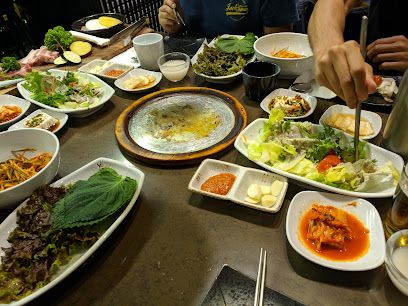
MYONGWOLGWAN
Experience authentic Korean barbecue at Myongwolgwan in Seoul's Gwangjin District - where tradition meets modern elegance.
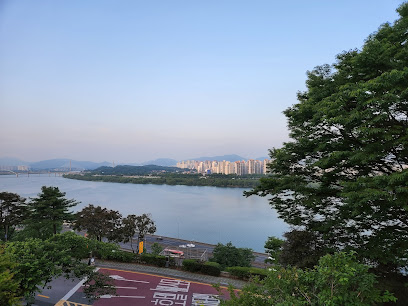
La Yeon
Discover La Yeon: A Michelin-starred destination offering exquisite traditional Korean cuisine with breathtaking views in Seoul's Jung District.
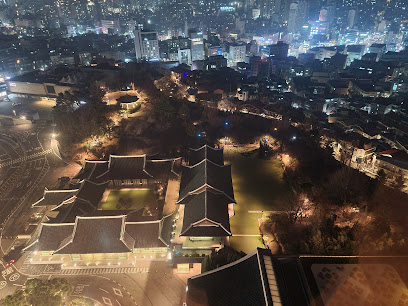
Himalaya Garden Indian/Nepali Restaurant
Discover authentic Indian and Nepali cuisine at Himalaya Garden Restaurant in Suwon-si – where flavor meets hospitality in every dish.
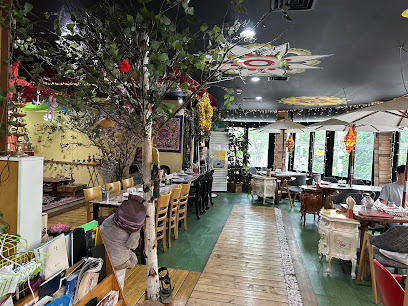
Hangong-Gan
Experience exquisite Asian Fusion cuisine in the heart of Mapo-gu at Hangong-Gan – where tradition meets innovation.
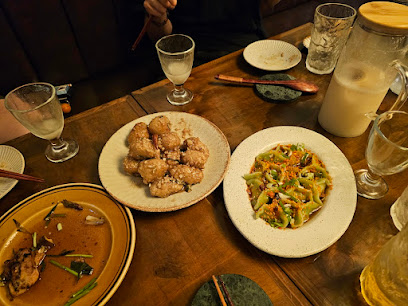
Mokmyeoksan Horaengi
Experience authentic Korean flavors at Mokmyeoksan Horaengi—where tradition meets taste in the heart of Seoul.
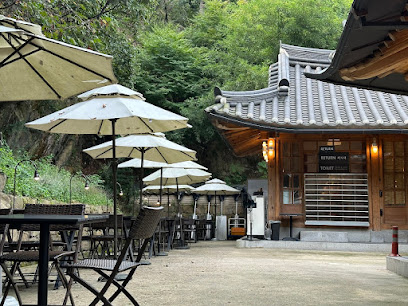
Cafe GD
Experience the inviting atmosphere and delicious offerings at Cafe GD in Miryang-si - A must-visit destination for coffee lovers.
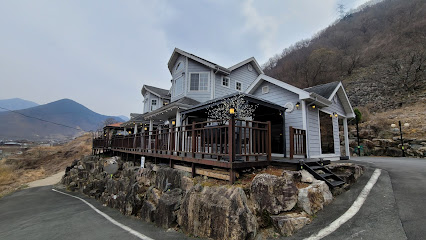
Eol-Eumgol
Discover Eol-Eumgol: A breathtaking tourist attraction in Gyeongsangnam-do known for its serene landscapes and vibrant natural beauty.
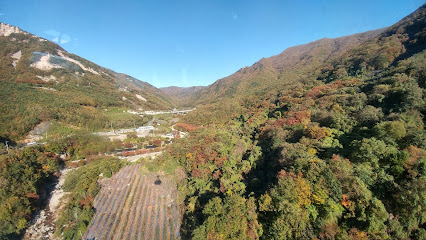
Yaksan Garden
Discover the authentic flavors of Korea at Yaksan Garden in Miryang - a culinary delight amidst stunning landscapes.

Yeoulmog
Discover Yeoulmog: An authentic Korean dining experience nestled in Gyeongsangnam-do's beautiful landscapes.
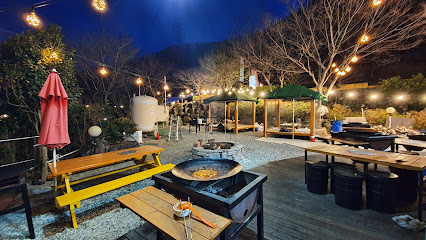
The Miryang
Experience exquisite American cuisine alongside stunning art at The Miryang—your ultimate culinary destination in Gyeongsangnam-do.
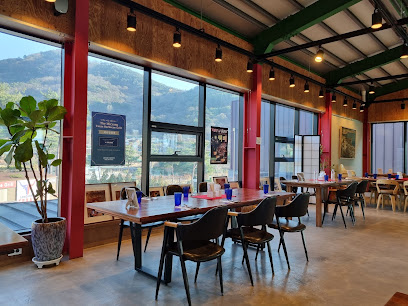
Sangeuneul
Experience authentic Korean flavors at Sangeuneul in Miryang - where tradition meets taste in every dish.

Picky Child Dining
Discover the taste of innovation at Picky Child Dining - Daegu's top fusion restaurant blending global flavors with local ingredients.
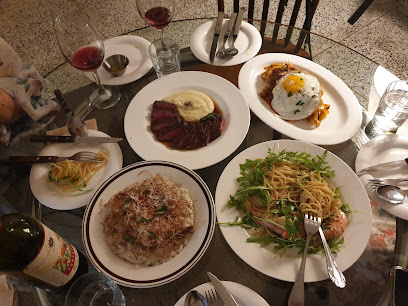
Markets, malls and hidden boutiques
Starfield Goyang
Discover the ultimate shopping experience at Starfield Goyang, featuring diverse brands, dining, and entertainment in a modern setting.
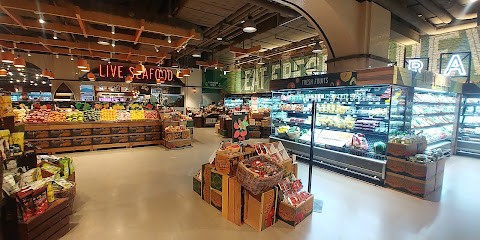
LOTTE Department Store Gwangbok
Explore LOTTE Department Store Gwangbok in Busan for an exceptional shopping experience featuring luxury brands, diverse dining, and vibrant entertainment.
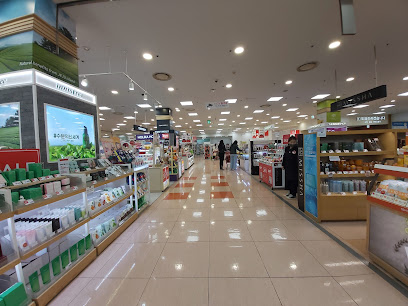
LOTTE Department Store Busan Main
Explore the luxurious LOTTE Department Store Busan Main, a premier shopping and dining destination in the heart of Busan, Korea.
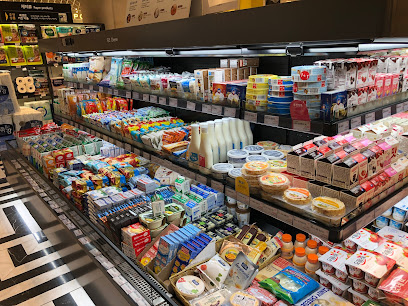
COSTCO Wholesale - Busan
Explore Costco Wholesale in Busan for a unique shopping experience blending American and Korean goods in a vibrant warehouse setting.
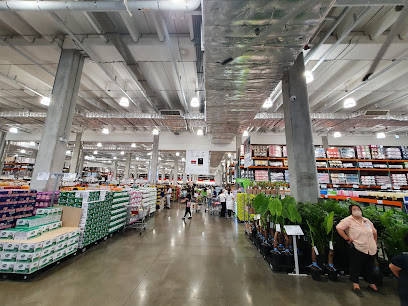
The Hyundai Daegu
Discover the ultimate shopping experience at Hyundai Daegu, where fashion meets culture in a vibrant department store setting.
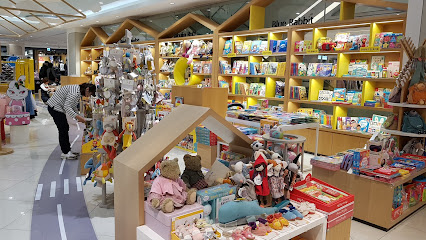
Costco Wholesale - Daegu Innovation City Branch
Explore Costco Wholesale - Daegu Innovation City for an unbeatable selection of bulk goods, unique Korean products, and exceptional value.
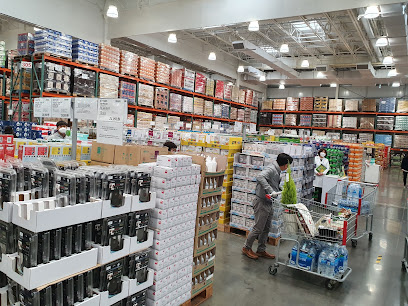
Costco Wholesale Daegu
Discover the diverse offerings of Costco Wholesale Daegu, where local flavors meet international products in a unique shopping experience.
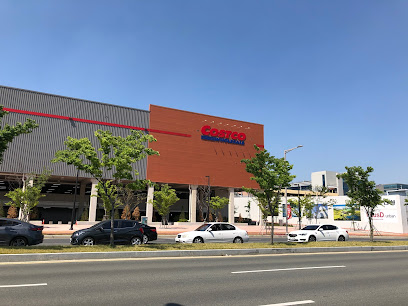
Amethyst Cavern Park
Discover the enchanting Amethyst Cavern Park in Ulsan, where nature's beauty meets thrilling attractions for an unforgettable experience.
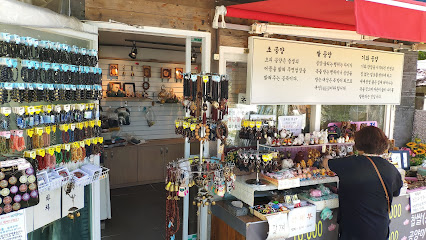
Shinsegae Department Store - Gimhae
Explore the vibrant Shinsegae Department Store in Gimhae, a shopping haven featuring luxury brands, local delicacies, and a taste of Korean culture.
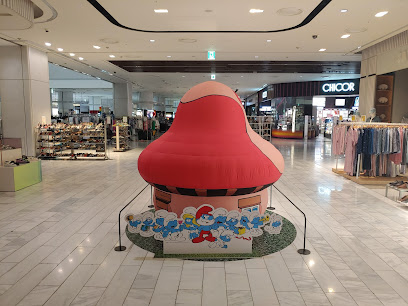
NC Department Store, PNU
Explore a shopping paradise at NC Department Store, PNU in Busan, where local culture meets international shopping in a vibrant atmosphere.
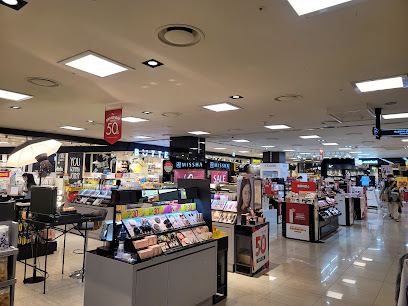
SEOMYEON MALL - Seomyeon Underground Shopping Center
Explore Seomyeon Mall, a must-visit underground shopping center in Busan, where fashion, food, and fun come together in a vibrant atmosphere.
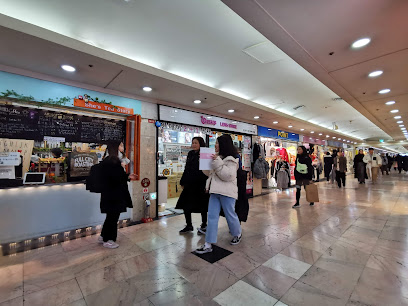
Gimhae Nakdong River Rail Park
Experience the scenic charm of Gimhae Nakdong River Rail Park, where nature meets fun in Gyeongsangnam-do.
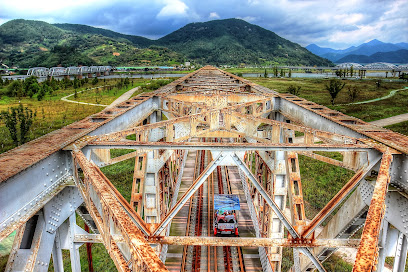
Donga Department
Discover the ultimate shopping experience at Donga Department in Daegu, where style meets convenience in a vibrant atmosphere.
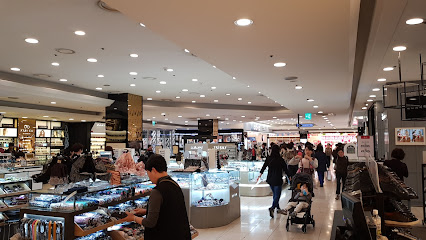
Yeongnamnu
Explore Yeongnamnu, a historical gem in Miryang-si offering breathtaking views and rich cultural heritage, perfect for history enthusiasts and nature lovers.
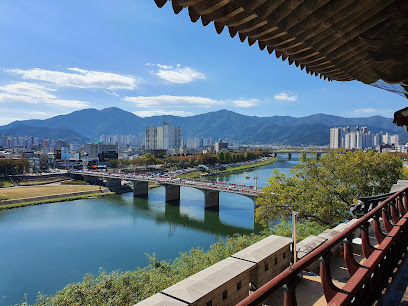
Lotte Department Store
Explore Lotte Department Store in Daegu – a shopping paradise offering fashion, food, and cultural experiences all in one vibrant location.

Essential bars & hidden hideouts
Sam Ryan's
Discover the vibrant nightlife at Sam Ryan's, a lively bar in Haeundae, Busan, blending local charm with international flavors.
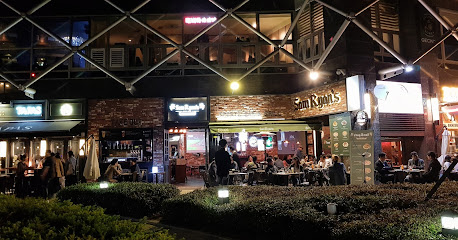
Bar
Experience the vibrant nightlife of Jeonju at this local bar, where traditional drinks and a friendly atmosphere await you.

Pull
Immerse yourself in the lively ambiance of Pull Bar in Miryang, where local flavors meet vibrant nightlife for an unforgettable experience.
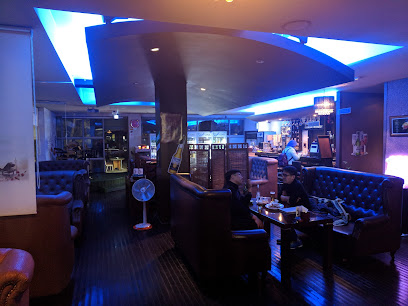
스카이클럽
Experience unforgettable nights at 스카이클럽, Changwon's vibrant karaoke bar, where music and laughter create lasting memories.
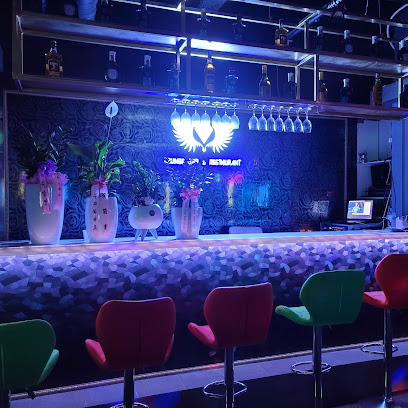
Pyongyan
Experience the energetic nightlife at Pyongyan, a bar in Muju-gun offering an array of drinks and a vibrant atmosphere perfect for tourists.

the#
Discover the vibrant nightlife of Jinju with unique bars offering local drinks and a lively atmosphere perfect for unwinding after a day of exploration.

Local Phrases about Miryang Valley
-
- Hello안녕하세요
[annyeonghaseyo] - Goodbye안녕히 가세요
[annyeonghi gaseyo] - Yes네
[ne] - No아니요
[aniyo] - Please/You're welcome부탁합니다/천만에요
[butakhamnida/cheonmaneyo] - Thank you감사합니다
[gamsahamnida] - Excuse me/Sorry죄송합니다
[joesonghamnida] - How are you?어떻게 지내세요?
[eotteoke jinaeseyo?] - Fine. And you?좋아요. 그리고 당신은?
[joayo. geurigo dangsineun?] - Do you speak English?영어 할 줄 아세요?
[yeongeo hal jul aseyo?] - I don't understand이해하지 못해요
[ihaehaji mothaeyo]
- Hello안녕하세요
-
- I'd like to see the menu, please메뉴를 보여주세요
[menyureul boyeojuseyo] - I don't eat meat고기를 먹지 않아요
[gogireul meokji anayo] - Cheers!건배!
[geonbae!] - I would like to pay, please계산하고 싶어요
[gyesanhago sipseoyo]
- I'd like to see the menu, please메뉴를 보여주세요
-
- Help!도와주세요!
[dowajuseyo!] - Go away!가세요!
[gaseyo!] - Call the Police!경찰을 불러주세요!
[gyeongchareul bulleojuseyo!] - Call a doctor!의사를 불러주세요!
[uisareul bulleojuseyo!] - I'm lost길을 잃었어요
[gireul ilheosseoyo] - I'm ill아파요
[apayo]
- Help!도와주세요!
-
- I'd like to buy...사고 싶어요
[sago sipseoyo] - I'm just looking둘러보고 있어요
[dulleobogo isseoyo] - How much is it?얼마에요?
[eolmaeyo?] - That's too expensive너무 비싸요
[neomu bissayo] - Can you lower the price?가격을 깎을 수 있어요?
[gageogeul kkageul su isseoyo?]
- I'd like to buy...사고 싶어요
-
- What time is it?지금 몇 시에요?
[jigeum myeot sieyo?] - It's one o'clock한 시예요
[han sieyo] - Half past (10)열 시 반
[yeol si ban] - Morning아침
[achim] - Afternoon오후
[ohu] - Evening저녁
[jeonyeok] - Yesterday어제
[eoje] - Today오늘
[oneul] - Tomorrow내일
[naeil] - 1일
[il] - 2이
[i] - 3삼
[sam] - 4사
[sa] - 5오
[o] - 6육
[yuk] - 7칠
[chil] - 8팔
[pal] - 9구
[gu] - 10십
[sip]
- What time is it?지금 몇 시에요?
-
- Where's a/the...?어디에 ...이/가 있어요?
[eodie ...i/ga isseoyo?] - What's the address?주소가 뭐에요?
[jusoga mwoeyo?] - Can you show me (on the map)?지도로 보여주세요?
[jidoro boyeojuseyo?] - When's the next (bus)?다음 (버스)는 언제에요?
[daeum (beoseu)neun eonjeyo?] - A ticket (to ....)표 하나 주세요
[pyo hana juseyo]
- Where's a/the...?어디에 ...이/가 있어요?
History of Miryang Valley
-
Miryang Valley's history dates back to the prehistoric era, with archeological findings suggesting human settlement as far back as the Neolithic period. The valley served as a cradle for early Korean civilization, with various artifacts and dolmens discovered in the region providing a glimpse into the lives of its ancient inhabitants.
-
During the Silla Dynasty (57 BC – 935 AD), Miryang Valley became an important region due to its strategic location. The Silla Kingdom, known for unifying the Korean Peninsula, built various fortresses in the area to protect against invasions. The remnants of these fortifications, such as the Hwangseong Fortress, stand as a testament to the valley's historical significance during this era.
-
In the Goryeo Dynasty (918–1392), Miryang Valley continued to thrive as an agricultural hub. The fertile lands of the valley supported extensive farming and the growth of local markets. This period saw the construction of various Buddhist temples, including Pyochungsa Temple, which remains an important cultural site today.
-
The Joseon Dynasty (1392–1897) marked a period of cultural blossoming for Miryang Valley. Confucian scholars often visited the area, leading to the establishment of educational institutes like Miryang Hyanggyo, a Confucian academy. The valley also became known for its traditional Korean hanok houses, many of which are preserved and can be visited today.
-
During the Japanese occupation of Korea (1910–1945), Miryang Valley was a site of significant resistance against colonial rule. The valley's residents actively participated in the March 1st Movement of 1919, a nationwide protest for independence. The legacy of this resistance is commemorated in various monuments and museums throughout the valley.
-
In the post-Korean War era, Miryang Valley transitioned from an agricultural heartland to a popular tourist destination. Initiatives to preserve historical sites and promote cultural heritage have turned the valley into a living museum. Visitors can explore the scenic landscapes, ancient temples, and traditional villages that make Miryang a unique blend of history and natural beauty.
Miryang Valley Essentials
-
Miryang Valley is located in the Gyeongsangnam-do province of South Korea. The nearest major airport is Gimhae International Airport in Busan, approximately 90 kilometers away. From Busan, you can take a train directly to Miryang, which takes around 45 minutes. Alternatively, you can reach Miryang by bus from various major cities including Seoul, Daegu, and Ulsan. The Express Bus Terminal in Seoul offers several daily routes to Miryang, with the journey taking about 4 hours.
-
Miryang is well-connected by public transportation. The city's local buses cover most areas, making it easy to get around. Taxis are also readily available and relatively affordable. For a more flexible travel experience, consider renting a car. The train station in Miryang offers regular services to nearby cities, making it convenient for day trips.
-
The official currency in South Korea is the South Korean Won (KRW). Credit cards are widely accepted in hotels, restaurants, and larger stores. However, it is advisable to carry some cash for small purchases and in rural areas. ATMs are plentiful in Miryang, but make sure to check if they accept international cards. Currency exchange services are available at major banks and certain ATMs.
-
Miryang Valley is generally a safe destination for tourists. However, as with any travel destination, it is wise to take standard precautions. Avoid walking alone at night in isolated areas and be mindful of your belongings in crowded places. There are no specific high-crime areas targeting tourists, but staying vigilant and aware of your surroundings is always advisable.
-
In case of an emergency, dial 119 for immediate assistance. This number connects you to emergency medical services, fire, and police. Miryang has several hospitals and clinics for medical emergencies. It is recommended to have travel insurance that covers medical emergencies. For minor health issues, pharmacies are available throughout the city and offer over-the-counter medications.
-
Fashion: Do dress modestly, especially when visiting religious sites. Avoid wearing overly revealing clothing. Religion: Do respect local customs and traditions. Always take off your shoes when entering someone's home or a traditional Korean guesthouse (hanok). Public Transport: Do give up your seat to elderly passengers. Don't talk loudly or play music on public transport. Greetings: Do greet people with a bow or a polite nod. A handshake is also acceptable when meeting someone for the first time. Eating & Drinking: Do try local delicacies and accept food offerings graciously. Don't stick your chopsticks upright in a bowl of rice, as it resembles a funeral rite.
-
To experience Miryang Valley like a local, visit during one of the traditional festivals such as the Miryang Arirang Festival. Explore the local markets where you can buy fresh produce and traditional Korean goods. Engage with locals, as they are often friendly and willing to share stories about the area's history and culture. Don't miss visiting the Yeongnamnu Pavilion and the Miryang River for picturesque views. For a unique experience, hike up the Yeongnam Alps, which offer breathtaking scenery and a chance to connect with nature.
Trending Landmarks in Miryang Valley
Nearby Cities to Miryang Valley
-
Things To Do in Ulsan
-
Things To Do in Daegu
-
Things To Do in Gyeongju
-
Things To Do in Pohang
-
Things To Do in Andong
-
Things To Do in Suncheon
-
Things To Do in Jeonju
-
Things To Do in Daejeon
-
Things To Do in Gwangju
-
Things To Do in Mokpo
-
Things To Do in Suwon
-
Things To Do in Fukuoka
-
Things To Do in Seoul
-
Things To Do in Chuncheon
-
Things To Do in Incheon








